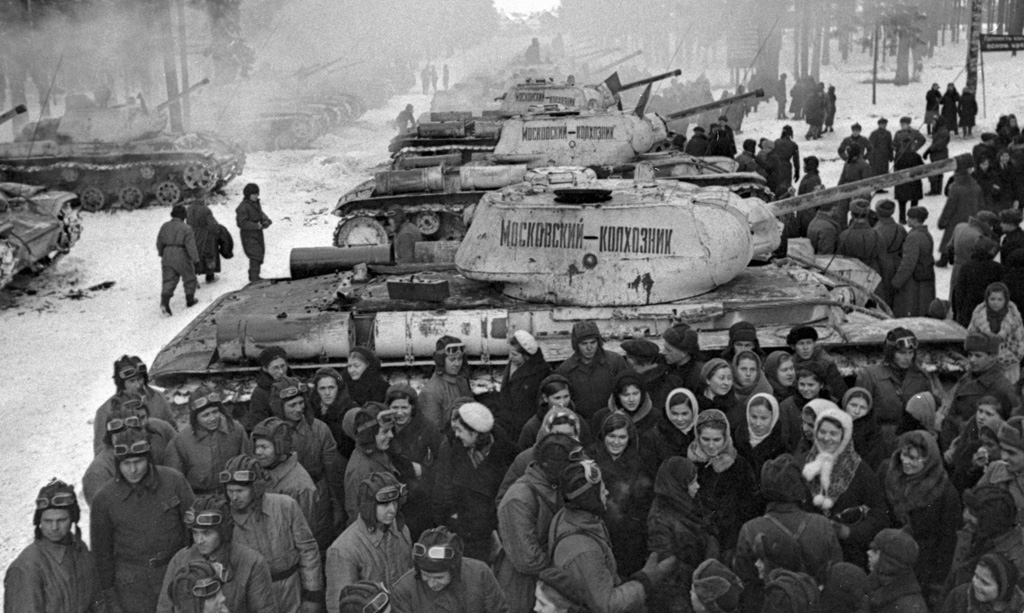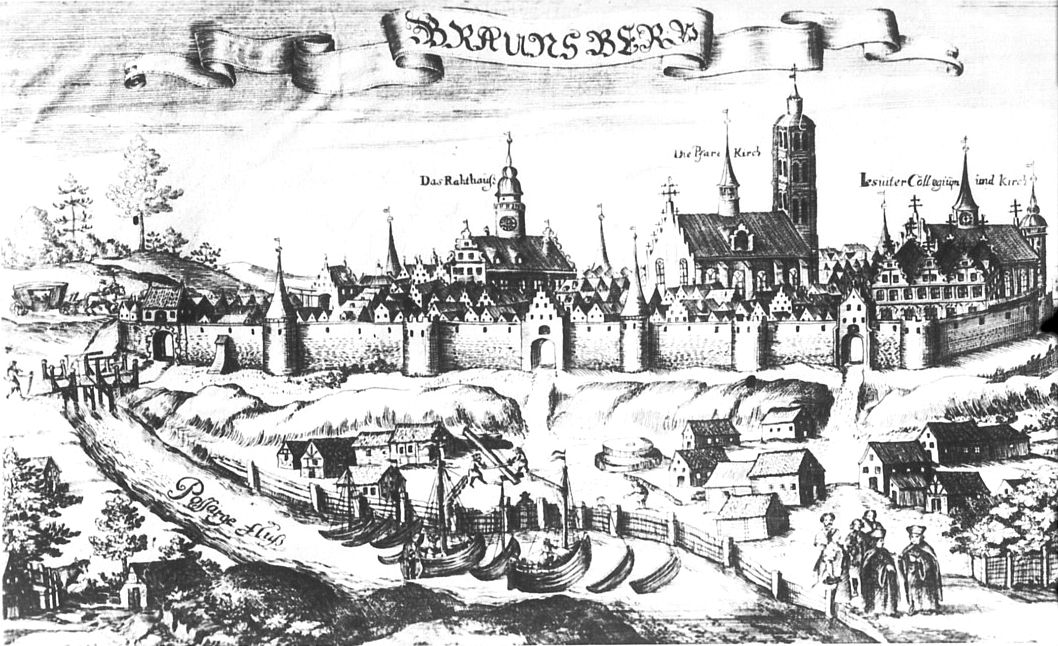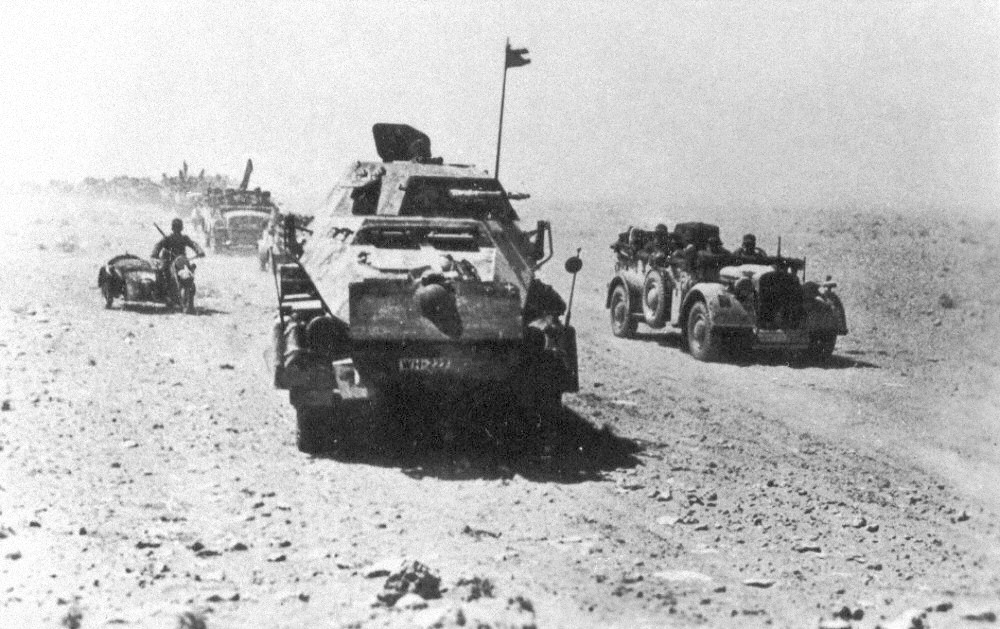|
102nd Infantry Division (Wehrmacht)
The 102nd Infantry Division was a German military infantry division during World War II. It served on the Eastern Front, fighting in the Rzhev salient and the Battle of Kursk. It was destroyed during the latter stages of the Soviet Red Army's East Prussian Offensive in 1945. Organisation and history The division was formed on 15 December 1940 in ''Wehrkreis'' II (Mecklenburg/Pomerania), in the 12th mobilisation wave, using elements of the 8th Infantry Division and the 28th Infantry Division. The division fought on the Eastern Front, for much of its existence it was part of the Ninth Army assigned to Army Group Centre. On 25 November 1942 the Soviets simultaneously launched attacks against the eastern, western and northern flanks of the German Rzhev salient, known as Operation Mars. North of the Osuga River, the 102nd successfully repelled repeated assaults by 20,000 infantry and over 100 tanks of three Soviet 31st Army divisions (The 31st Army led its attack with the 88th, ... [...More Info...] [...Related Items...] OR: [Wikipedia] [Google] [Baidu] |
Infantry
Infantry is a military specialization which engages in ground combat on foot. Infantry generally consists of light infantry, mountain infantry, motorized infantry & mechanized infantry, airborne infantry, air assault infantry, and marine infantry. Although disused in modern times, heavy infantry also commonly made up the bulk of many historic armies. Infantry, cavalry, and artillery have traditionally made up the core of the combat arms professions of various armies, with the infantry almost always comprising the largest portion of these forces. Etymology and terminology In English, use of the term ''infantry'' began about the 1570s, describing soldiers who march and fight on foot. The word derives from Middle French ''infanterie'', from older Italian (also Spanish) ''infanteria'' (foot soldiers too inexperienced for cavalry), from Latin '' īnfāns'' (without speech, newborn, foolish), from which English also gets '' infant''. The individual-soldier term ''infantry ... [...More Info...] [...Related Items...] OR: [Wikipedia] [Google] [Baidu] |
Operation Mars
Operation Mars (Russian: Операция «Марс»), also known as the Second Rzhev-Sychevka Offensive Operation (Russian: Вторая Ржевско-Сычёвская наступательная операция), was the codename for an offensive launched by Soviet forces against German forces during World War II. It took place between 25 November and 20 December 1942 around the Rzhev salient in the vicinity of Moscow. The offensive was a joint operation of the Soviet Western Front and Kalinin Front co-ordinated by Georgy Zhukov. The offensive was one in a series of particularly-bloody engagements that are collectively known in Soviet and Russian histories as the Battles of Rzhev, which occurred near Rzhev, Sychevka and Vyazma between January 1942 and March 1943. The battles became known as the "Rzhev meat grinder" ("Ржевская мясорубка") for their huge losses, particularly on the Soviet side. For many years, they were relegated to a footnote in Sovi ... [...More Info...] [...Related Items...] OR: [Wikipedia] [Google] [Baidu] |
Schleswig-Holstein
Schleswig-Holstein (; da, Slesvig-Holsten; nds, Sleswig-Holsteen; frr, Slaswik-Holstiinj) is the northernmost of the 16 states of Germany, comprising most of the historical duchy of Holstein and the southern part of the former Duchy of Schleswig. Its capital city is Kiel; other notable cities are Lübeck and Flensburg. The region is called ''Slesvig-Holsten'' in Danish and pronounced . The Low German name is ''Sleswig-Holsteen'', and the North Frisian name is ''Slaswik-Holstiinj''. In more dated English, it is also known as ''Sleswick-Holsatia''. Historically, the name can also refer to a larger region, containing both present-day Schleswig-Holstein and the former South Jutland County (Northern Schleswig; now part of the Region of Southern Denmark) in Denmark. It covers an area of , making it the 5th smallest German federal state by area (including the city-states). Schleswig was under Danish control during the Viking Age, but in the 12th century it escaped full control ... [...More Info...] [...Related Items...] OR: [Wikipedia] [Google] [Baidu] |
Braunsberg
Braniewo () (german: Braunsberg in Ostpreußen, la, Brunsberga, Old Prussian: ''Brus'', lt, Prūsa), is a town in northern Poland, in Warmia, in the Warmian-Masurian Voivodeship, with a population of 16,907 as of June 2021. It is the capital of Braniewo County. Braniewo is the second biggest city of Warmia after Olsztyn and one of the historical centers of the region. Location Braniewo lies on the Pasłęka River about 5 km from the Vistula Lagoon, about 35 km northeast of Elbląg and southwest of Kaliningrad ( pl, Królewiec). The Polish border with Russia's Kaliningrad Oblast lies 6 km north, and may be reached from Braniewo via National road 54. History Middle Ages According to the German geographer Johann Friedrich Goldbeck (1748-1812), the town originally was named Brunsberg after Bruno von Schauenburg (1205–1281), bishop of Olomouc in Moravia, who accompanied King Ottokar II of Bohemia in 1254 and 1267 when the latter participated in the crusade ... [...More Info...] [...Related Items...] OR: [Wikipedia] [Google] [Baidu] |
4th Army (Wehrmacht)
The 4th Army () was a field army of the Wehrmacht during World War II. Invasions of Poland and France The 4th Army was activated on 1 August 1939 with General Günther von Kluge in command. It took part in the Invasion of Poland of September 1939 as part of Army Group North, which was under Field Marshal Feodor von Bock. The 4th Army contained the II Corps and III Corps, each with two infantry divisions, the XIX Corps with two motorized and one panzer divisions, and three other divisions, including two in reserve. Its objective was to capture the Polish Corridor, thus linking mainland Germany with East Prussia. During the attack on the Low Countries and France, the 4th Army, as part of Field Marshal Gerd von Rundstedt's Army Group A, invaded Belgium from the Rhineland. Along with other German armies, the 4th Army penetrated the Dyle Line and completed the trapping of the Allied forces in France. The then Major-General Erwin Rommel, who was under Kluge, contributed immensely ... [...More Info...] [...Related Items...] OR: [Wikipedia] [Google] [Baidu] |
Heiligenbeil Pocket
The Heiligenbeil Pocket or Heiligenbeil Cauldron (german: Kessel von Heiligenbeil) was the site of a major encirclement battle on the Eastern Front during the closing weeks of World War II, in which the Wehrmacht's 4th Army was almost entirely destroyed during the Soviet Braunsberg Offensive Operation (13–22 March 1945). The pocket was located near Heiligenbeil in East Prussia in eastern Germany (now Mamonovo, Kaliningrad Oblast), and the battle, part of a broader Soviet offensive into the region of East Prussia, lasted from 26 January until 29 March 1945. Attack on East Prussia The Red Army's East Prussian Operation commenced on 13 January 1945 with the objective of rolling up the substantial German defences in East Prussia and cutting off the provincial capital of Königsberg. The Soviet forces were opposed by the German Army Group Centre, including the Fourth Army, under the command of General Friedrich Hossbach. While the 3rd Belorussian Front initially met strong res ... [...More Info...] [...Related Items...] OR: [Wikipedia] [Google] [Baidu] |
Narew
The Narew (; be, Нараў, translit=Naraŭ; or ; Sudovian: ''Naura''; Old German: ''Nare''; uk, Нарва, translit=Narva) is a 499-kilometre (310 mi) river primarily in north-eastern Poland, which is also a tributary of the river Vistula. The Narew is one of Europe's few braided rivers, the term relating to the twisted channels resembling braided hair. Around 57 kilometres (35 mi) of the river flows through western Belarus. Etymology The name of the river is from a Proto-Indo-European root ''*nr'' primarily associated with ''water'' (compare Neretva, Neris, Ner and Nur) or from a Lithuanian language verb ''nerti'' associated primarily with ''diving'' and ''flood''. Name of the lower portion The portion of the river between the junctions with the Western Bug and the Vistula is also known as the Bugonarew, Narwio-Bug, Narwo-Bug, Bugo-Narew, Narwiobug or Narwobug. At the confluence near Zegrze the Bug is 1.6x longer, drains a 1.4x larger basin, and has a slightl ... [...More Info...] [...Related Items...] OR: [Wikipedia] [Google] [Baidu] |
Operation Bagration
Operation Bagration (; russian: Операция Багратио́н, Operatsiya Bagration) was the codename for the 1944 Soviet Byelorussian strategic offensive operation (russian: Белорусская наступательная операция «Багратион», Belorusskaya nastupatelnaya Operatsiya ''Bagration''), a military campaign fought between 22 June and 19 August 1944 in Soviet Byelorussia in the Eastern Front of World War II, just over two weeks after the start of Operation Overlord in the west, causing the Germans to have to fight on two major fronts at the same time. The Soviet Union destroyed 28 of 34 divisions of Army Group Centre and completely shattered the German front line. It was the biggest defeat in German military history, with around 450,000 German casualties, while 300,000 other German soldiers were cut off in the Courland Pocket. On 22 June 1944, the Red Army attacked Army Group Centre in Byelorussia, with the objective of encirclin ... [...More Info...] [...Related Items...] OR: [Wikipedia] [Google] [Baidu] |
Bobruisk
Babruysk, Babrujsk or Bobruisk ( be, Бабруйск , Łacinka: , rus, Бобруйск, Bobrujsk, bɐˈbruɪ̯s̪k, yi, באָברויסק ) is a city in the Mogilev Region of eastern Belarus on the Berezina River. , its population was 209,675. The name Babrujsk (as well as that of the Babruyka River) probably originates from the Belarusian word (; ' beaver'), many of which used to inhabit the Berezina. However, beavers in the area had been almost eliminated by the end of the 19th century due to hunting and pollution. Babrujsk occupies an area of , and comprises over 450 streets whose combined length stretches for over . Babrujsk is located at the intersection of railroads to Asipovichy, Zhlobin, Aktsyabrski and roads to Minsk, Homyel, Mahilyow, Kalinkavichy, Slutsk, and Rahachow. It has the biggest timber mill in Belarus, and is also known for its chemical, machine building and metal-working industries. In 2021, there were 38 public schools in Babrujsk, with over 24 ... [...More Info...] [...Related Items...] OR: [Wikipedia] [Google] [Baidu] |
Pripet Marshes
__NOTOC__ The Pinsk Marshes ( be, Пінскія балоты, ''Pinskiya baloty''), also known as the Pripet Marshes ( be, Прыпяцкія балоты, ''Prypiackija baloty''), the Polesie Marshes, and the Rokitno Marshes, are a vast natural region of wetlands in mostly Belarus and also Ukraine, along the forested basin of the Pripyat River and its tributaries from Brest to the west, Mogilev in the northeast, and Kyiv to the southeast. It is one of the largest wetland areas of Europe. The city of Pinsk is one of the most important in the area.Pripet Marshes Overview The Pinsk Marshes mostly lie within the |
Kampfgruppe
In military history, the German term (pl. ; abbrev. KG, or KGr in usage during World War II, literally "fighting group" or "battle group") can refer to a combat formation of any kind, but most usually to that employed by the of Nazi Germany and its allies during World War II and, to a lesser extent, of the German Empire in World War I. It also referred to bomber groups in ''Luftwaffe'' usage, which themselves consisted of three or four (squadrons), and usually (but not exclusively) existed within bomber wings of three or four per wing. Nature The ''Kampfgruppe'' was an ''ad hoc'' combined arms formation, usually employing a combination of tanks, infantry, and artillery (including anti-tank) elements, generally organised for a particular task or operation.While the word ''Kampfgruppe'' in German literally refers to any battle group, the modern usage in the English-speaking world is restricted to World War II. ''Kampfgruppen'' in World War I lacked the panzer componen ... [...More Info...] [...Related Items...] OR: [Wikipedia] [Google] [Baidu] |






